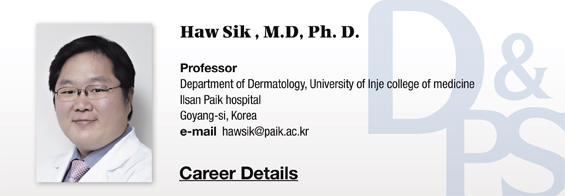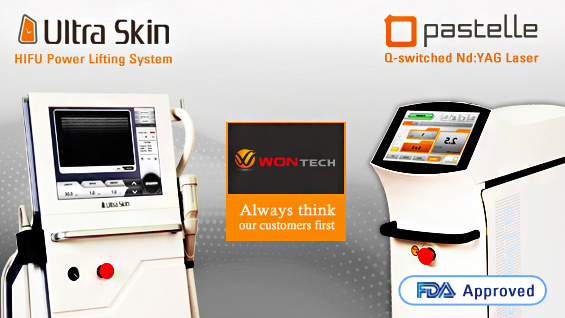▶ Previous Artlcle : #4-1. Treatment of Vitiligo
3. Laser treatment
Several laser devices have been used in treatment of vitiligo, and among these, the most effective is the 308nm Excimer laser. The therapeutic mechanism could be expected to equal the common phototherapy, however, laser is irradiated exclusively on the lesions. The key benefit of laser is that it reduces the amount of unnecessary exposure and minimizes the damage of normal tissues.
[Advertisement] Ultra Skin/Pastelle – Manufacturer: WONTECH(www.wtlaser.com)]
When used alone, laser brings repigmentation of at least 75% in over half of patients. As with previous treatments, it is more effective in lesions of the head and neck and the efficacy dwindles towards extremities. Unlike UV therapy, laser is effective in darker skins and patients who do not respond to UV therapy.
Laser has superior efficacy compared to the short-wavelength UV B therapy. It can also bring positive outcomes when used in combination with topical agents of hydrocortisone and tacrolimus, etc. The most common side effects are erythema and pruritus that spontaneously resolve. Inadequate adjustment of laser intensity or overlapped irradiation may cause burns.
Bioskin, a 311nm UV B device recently developed in Italy, is not a short-wavelength Excimer laser but is effective in vitiligo as it can focus UV B in localized areas. A helium neon 632.8nm laser may be used in segmental vitiligo not responding to traditional treatments.

Excimer laser
4. Surgical treatment
Surgical treatment of vitiligo is optimal for stabilized lesions that do not respond to traditional treatments. In progressive lesions, surgery often fails to bring repigmentation and the skin graft donor site may also develop vitiligo due to Koebner phenomenon.
The surgical method is largely divided into transplantation of melanocyte-rich tissues or transplantation of melanocyte suspension. In suction blister grafting, negative pressure is used to form a blister to separate the epidermis from dermis. Afterwards, the epidermis is placed over an abraded vitiligo area.
This treatment brings excellent aesthetic outcomes and the success rate is reported to be as high as 90%. However, the grafted area may be left with depigmented edges or have a different color from the surrounding skin.
Split-thickness skin graft can also be used in vitiligo. The biggest advantage of this technique is that it allows surgical treatment of larger surface areas.
Another surgical treatment of vitiligo is transplantation of autologous melanocyte suspension. In this method tissues collected from the donor site are deepithelized to form a suspension. Then, keratinocytes and melanocytes are transplanted together or melanocytes are isolated for transplantation. Despite its excellent effect, preparation of the suspension is complicated and time-consuming. On the other hand, it has the advantage of wider range of applicable skin areas.
5. Conclusion
Vitiligo is a chronic condition that is often difficult to treat. Patients suffer severe psychological stress and the quality of life is drastically lowered with lesions appearing in exposed areas of the face or hand, etc. When long-term treatments fail to bring effect, patients often give up or search for other methods of dealing with this problem. In this light, a close relationship between the patient and doctor is very important for the success of treatment. The doctor should encourage patients to follow the right treatment route especially when they are experiencing psychological duress.
Although not discussed in detail here, depigementation therapy can be considered in patients with lesions covering a very large area of the body. As for exposed lesions not responding to long-term therapy, make-up products and techniques can be used for camouflage. This series on vitiligo has discussed etiology and clinical manifestations of the disease. I hope this series provided helpful information to the doctors practicing in vitiligo treatment. I sincerely thank the readers for their interest.
-To be continued-
▶ Next Artlcle : #5-1. Understanding IPL





















